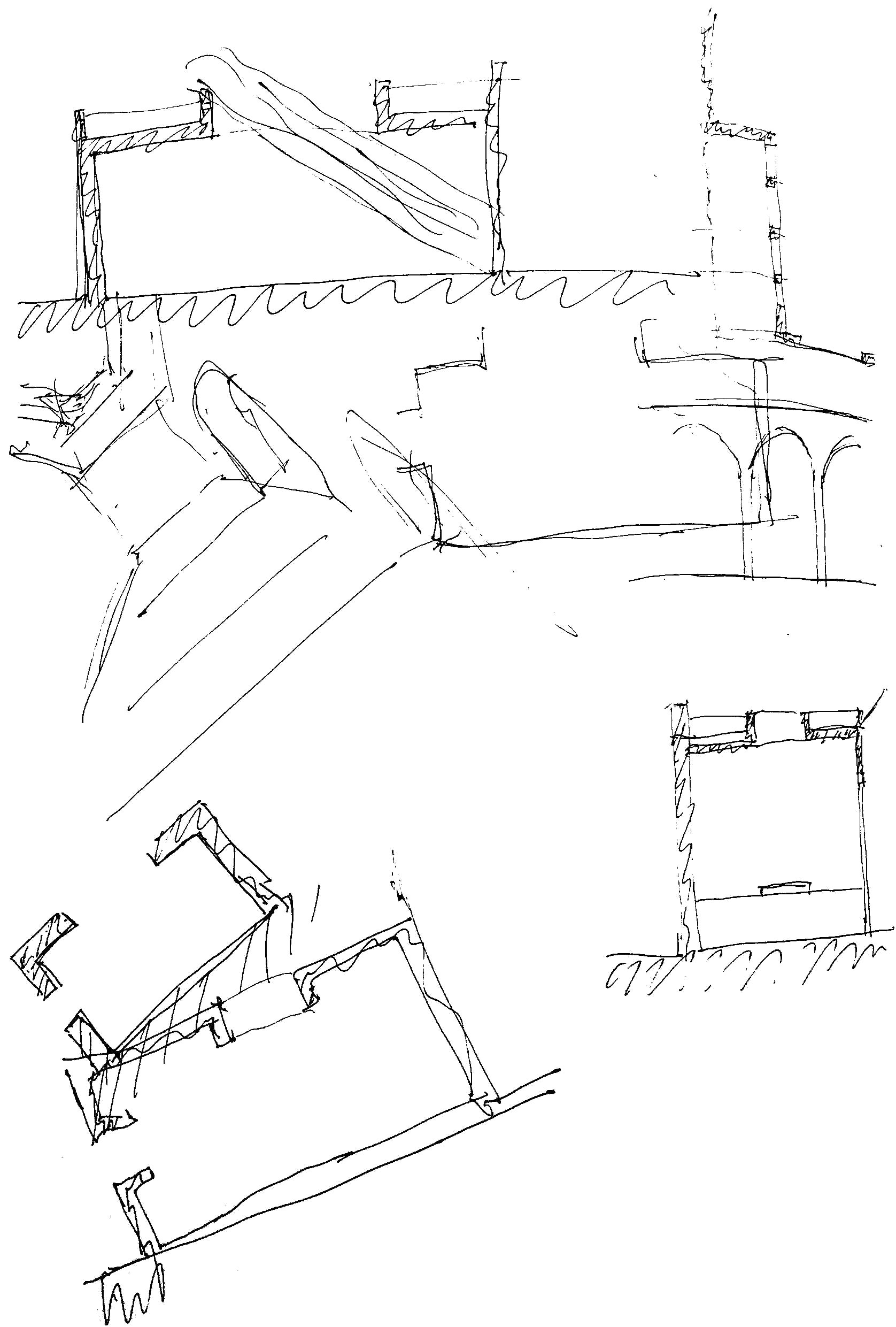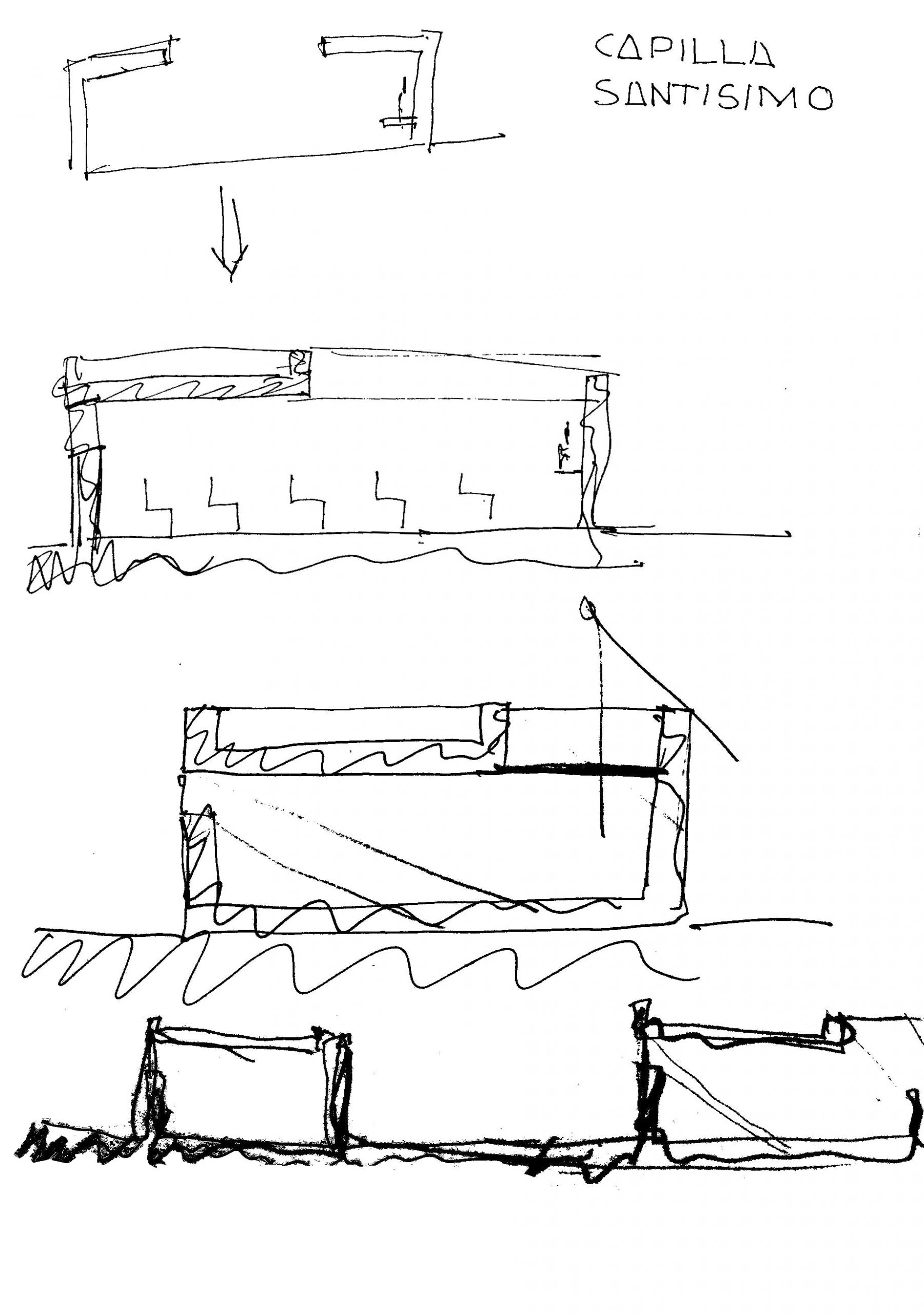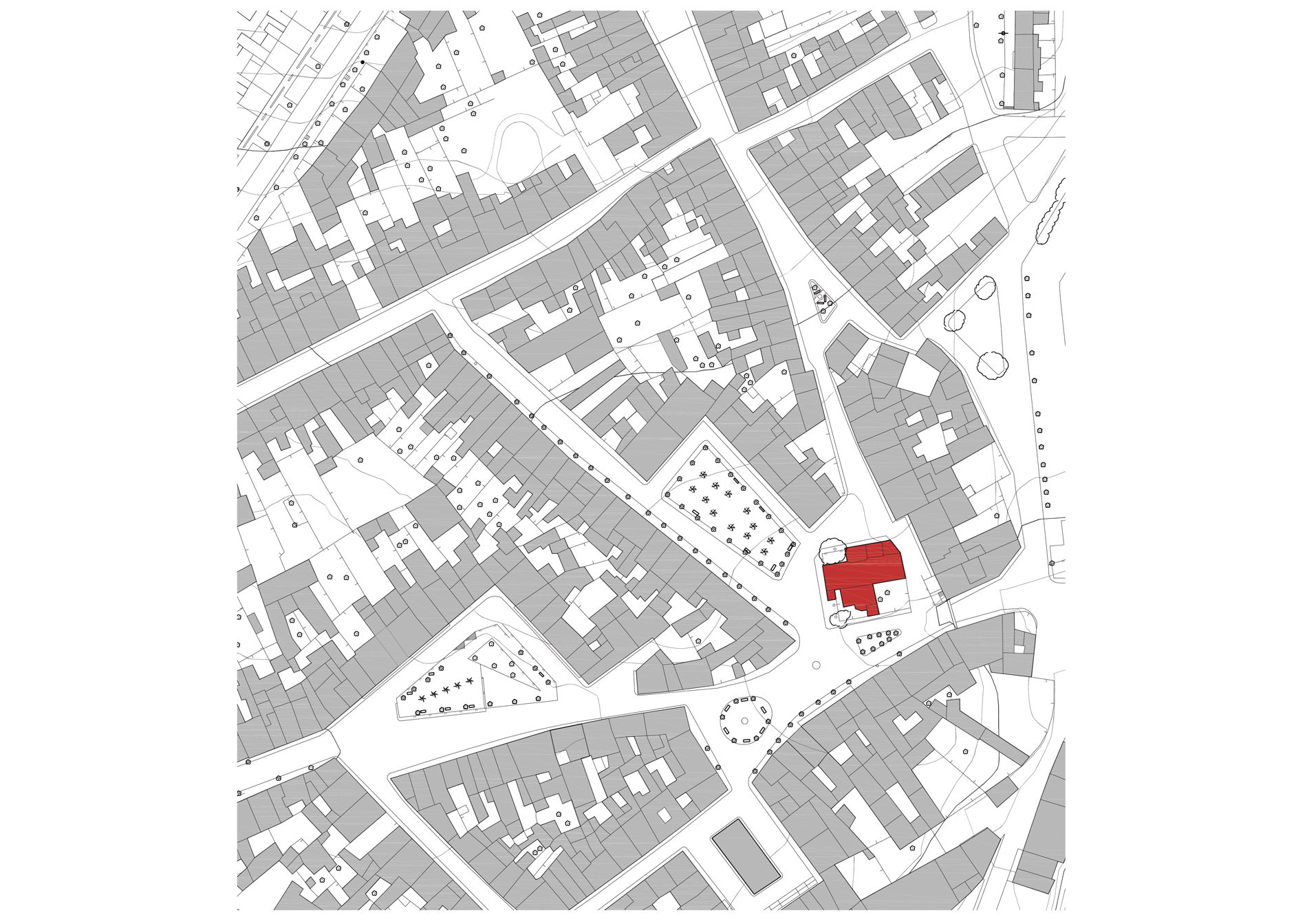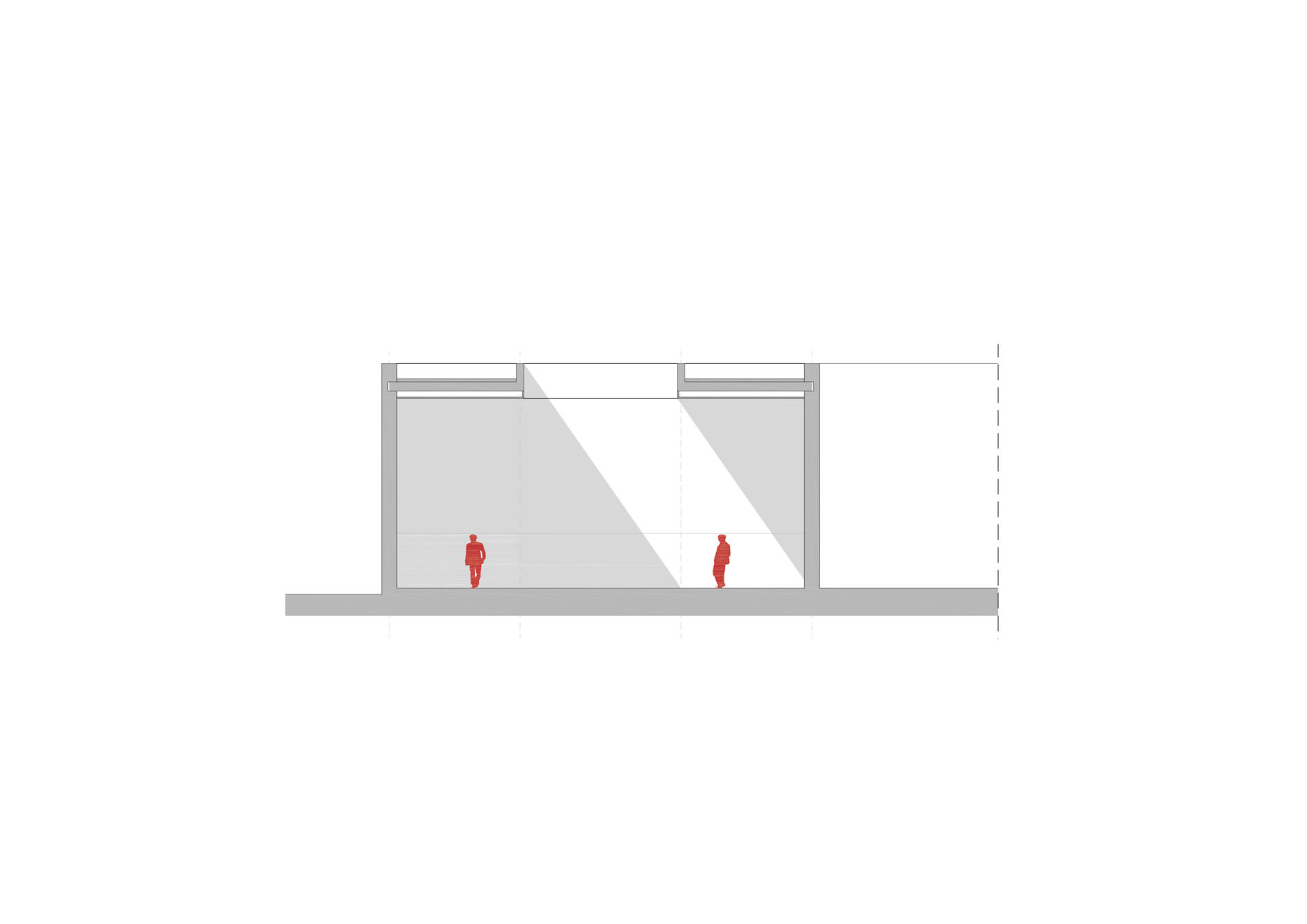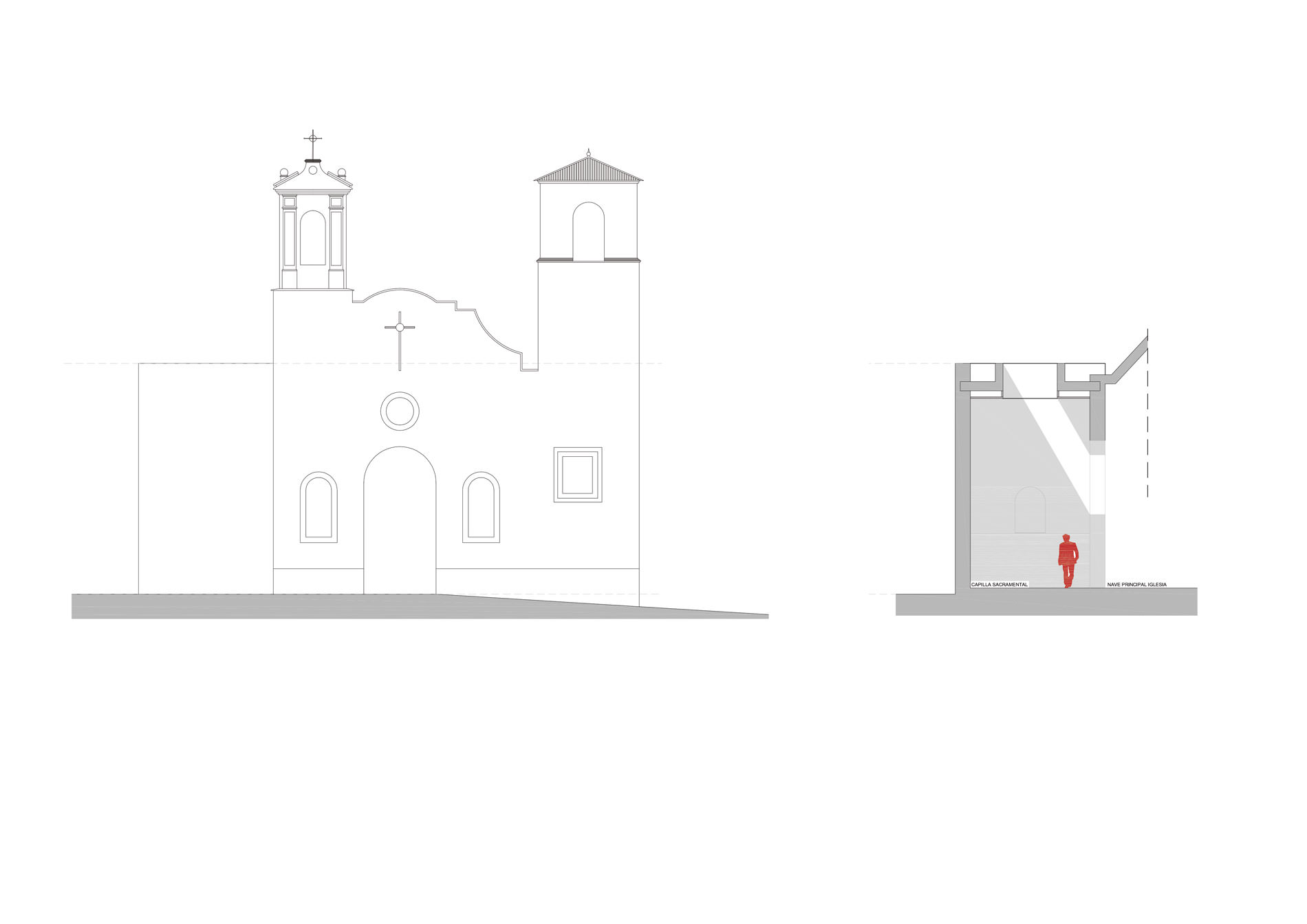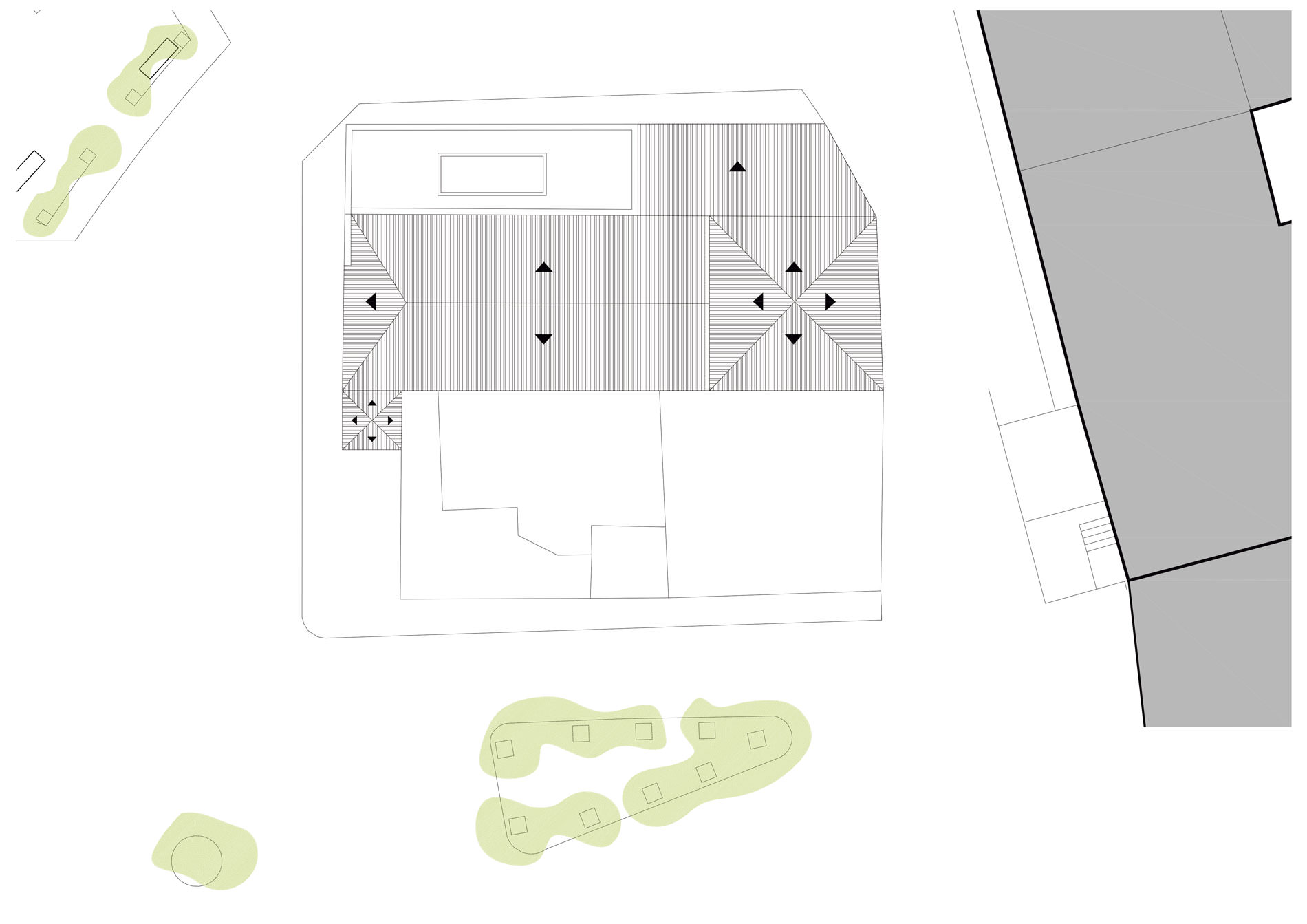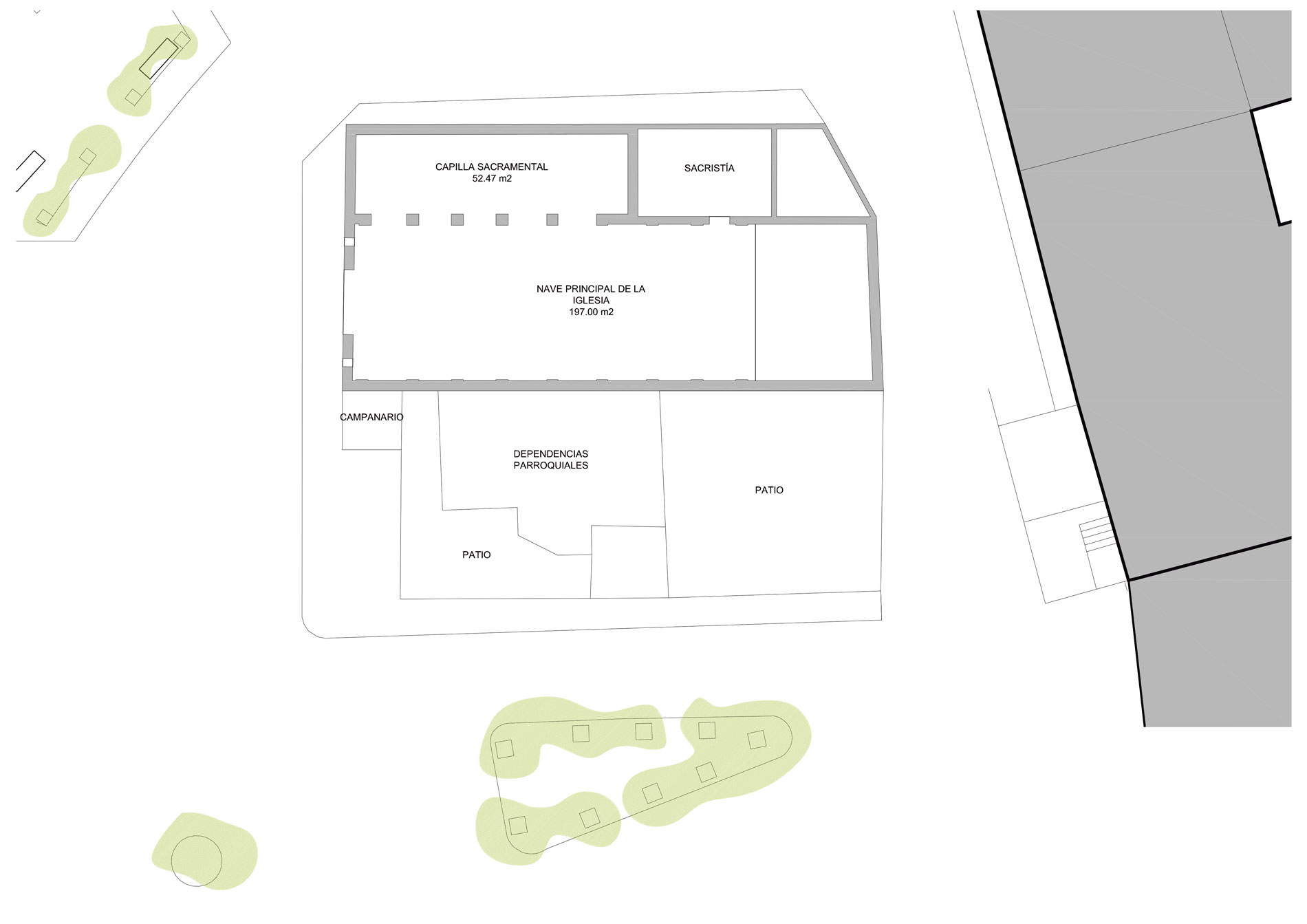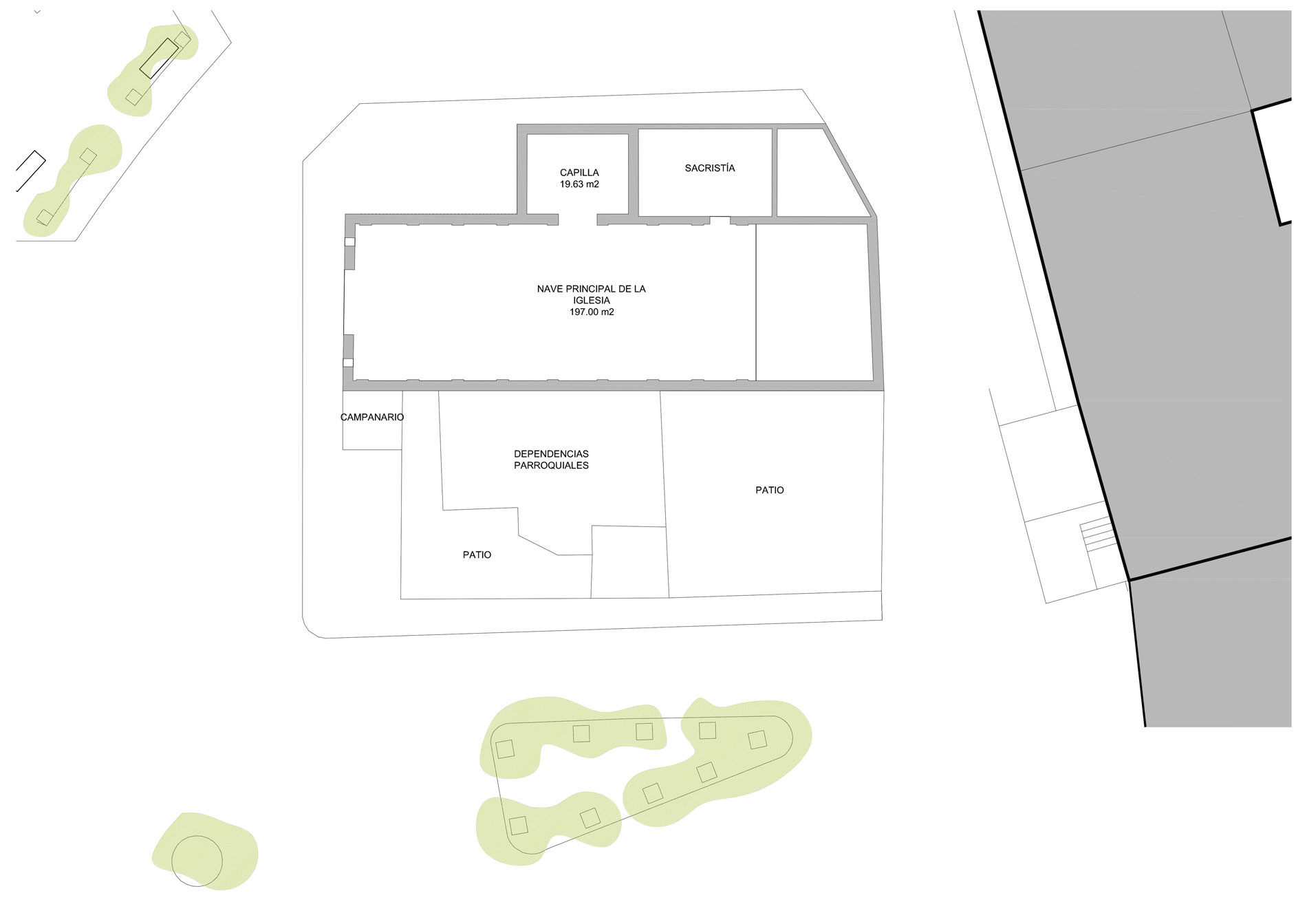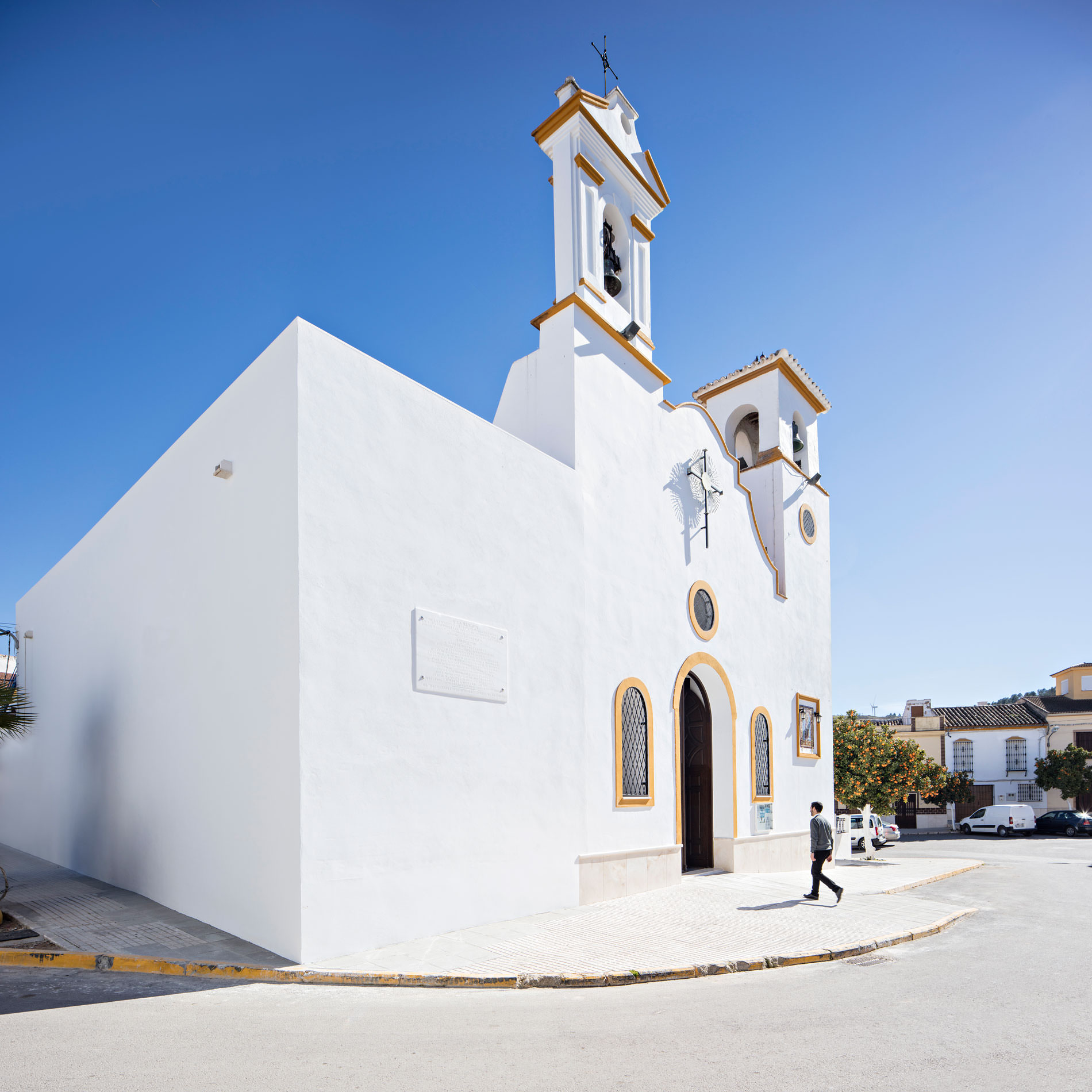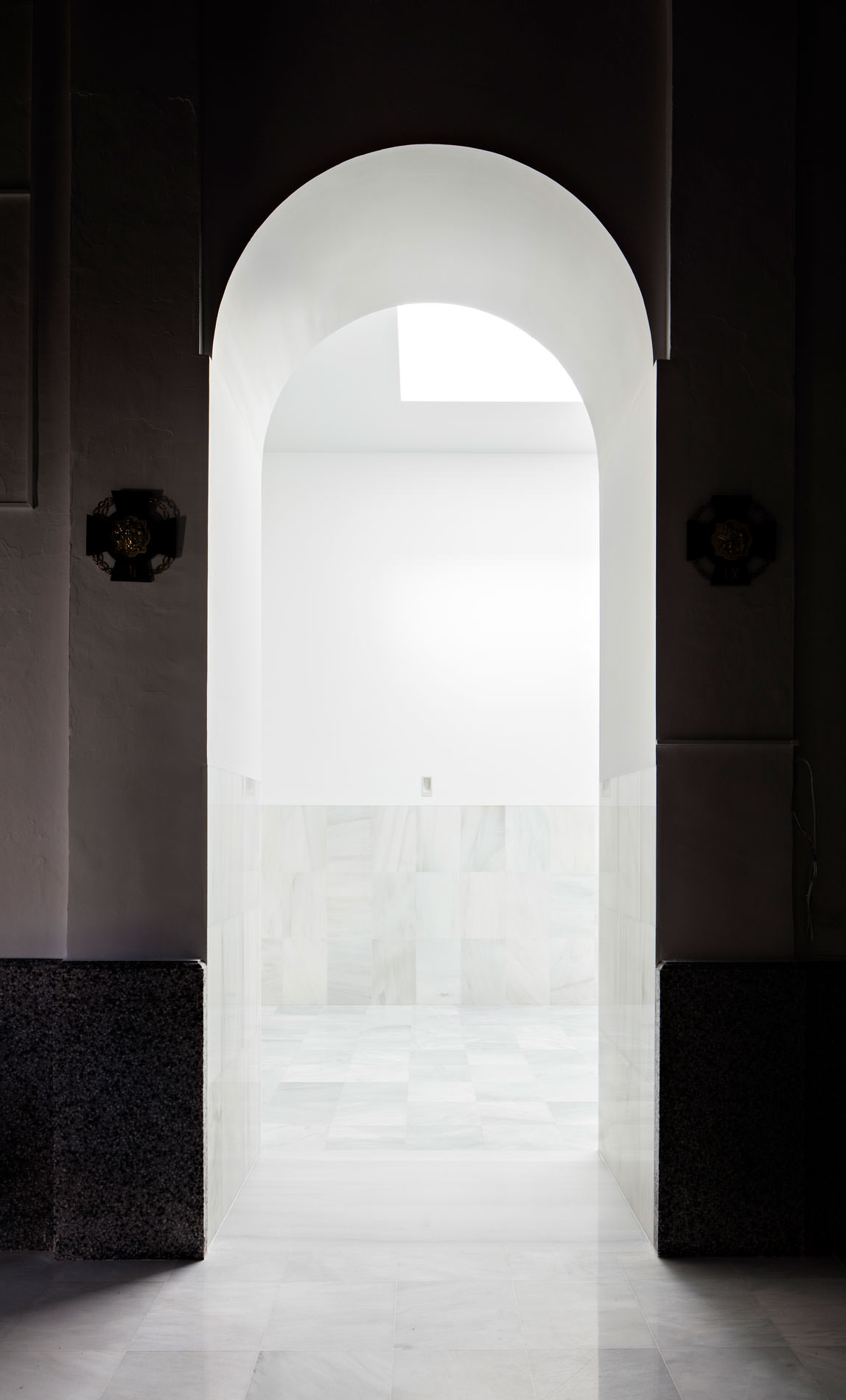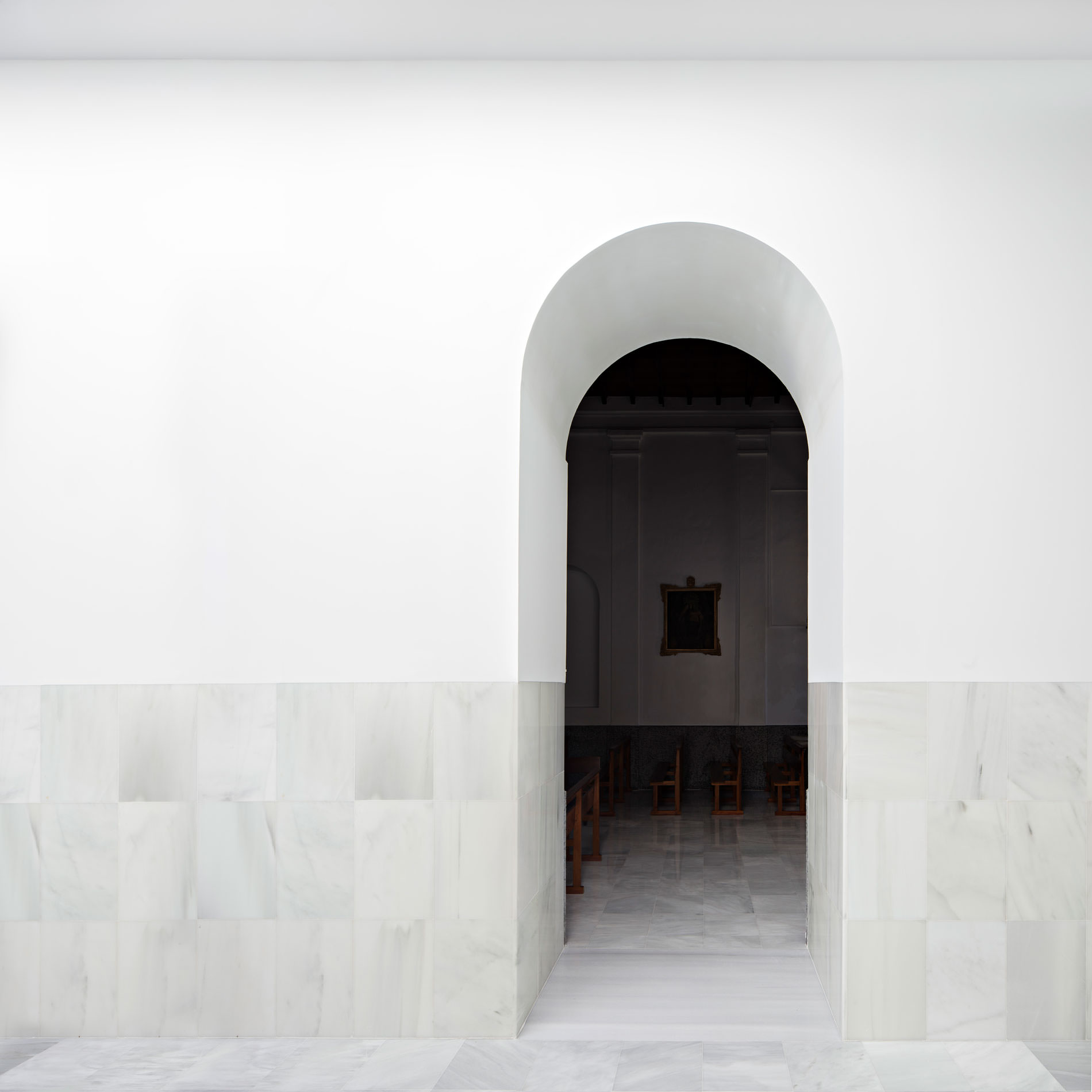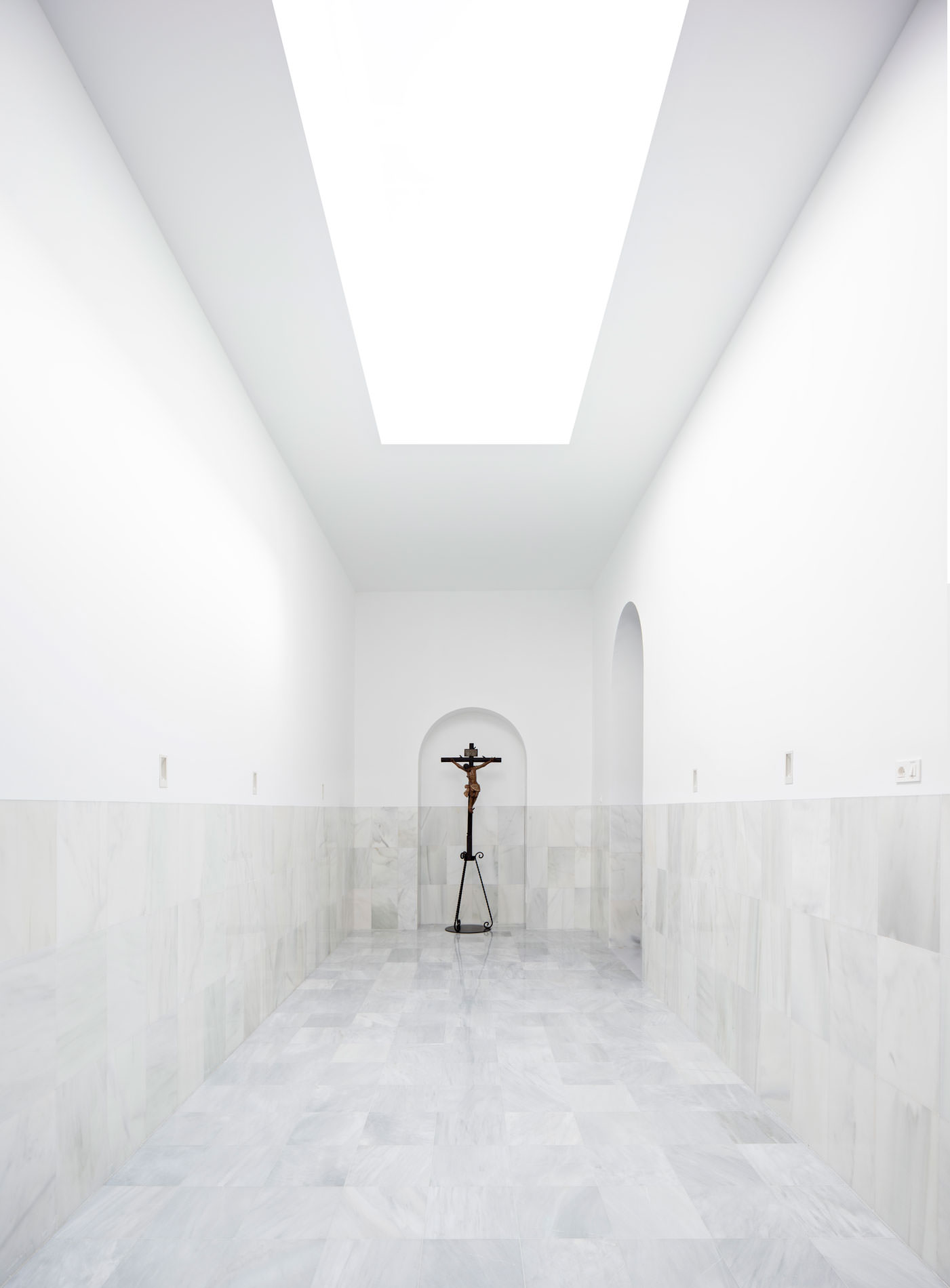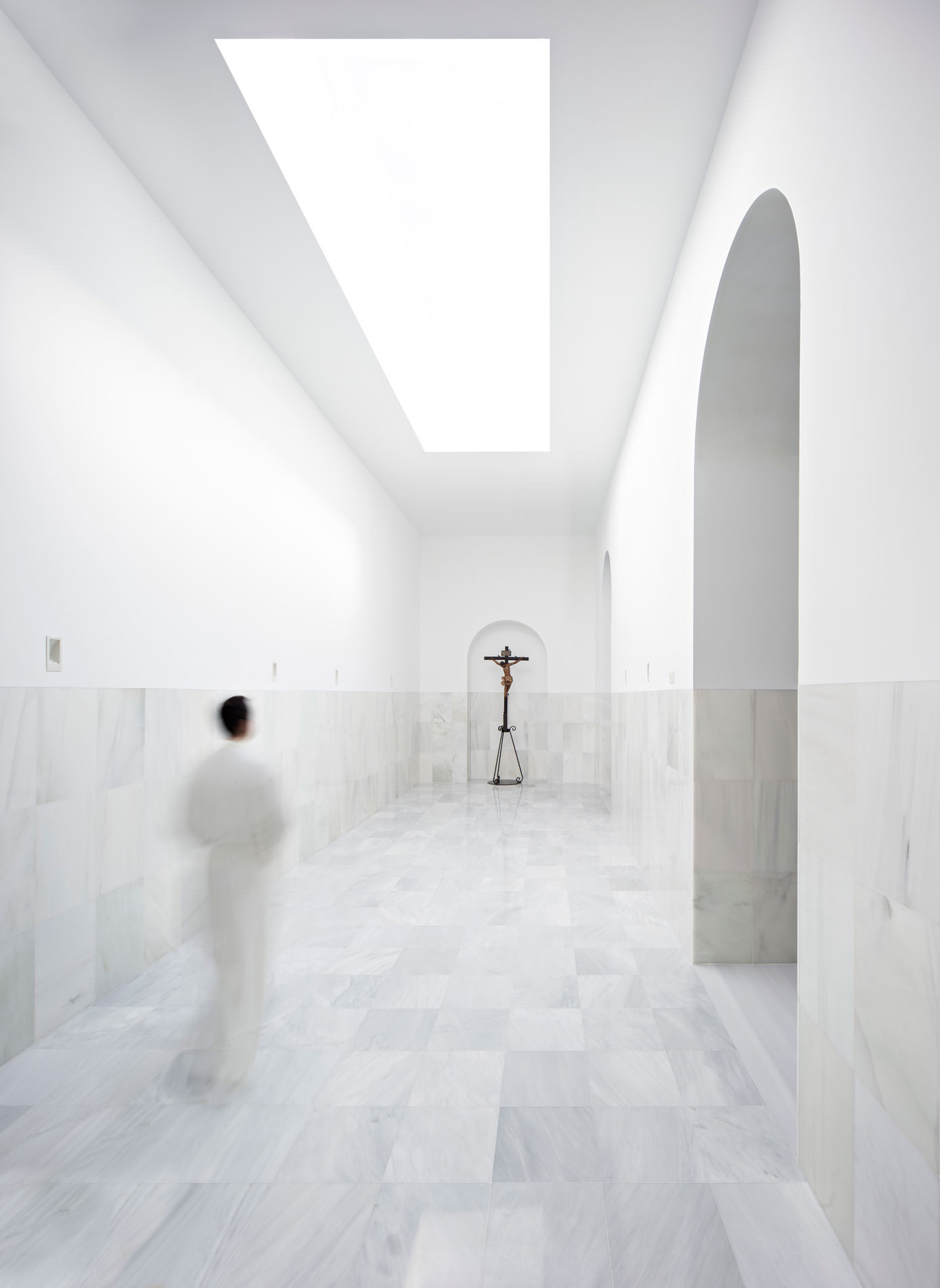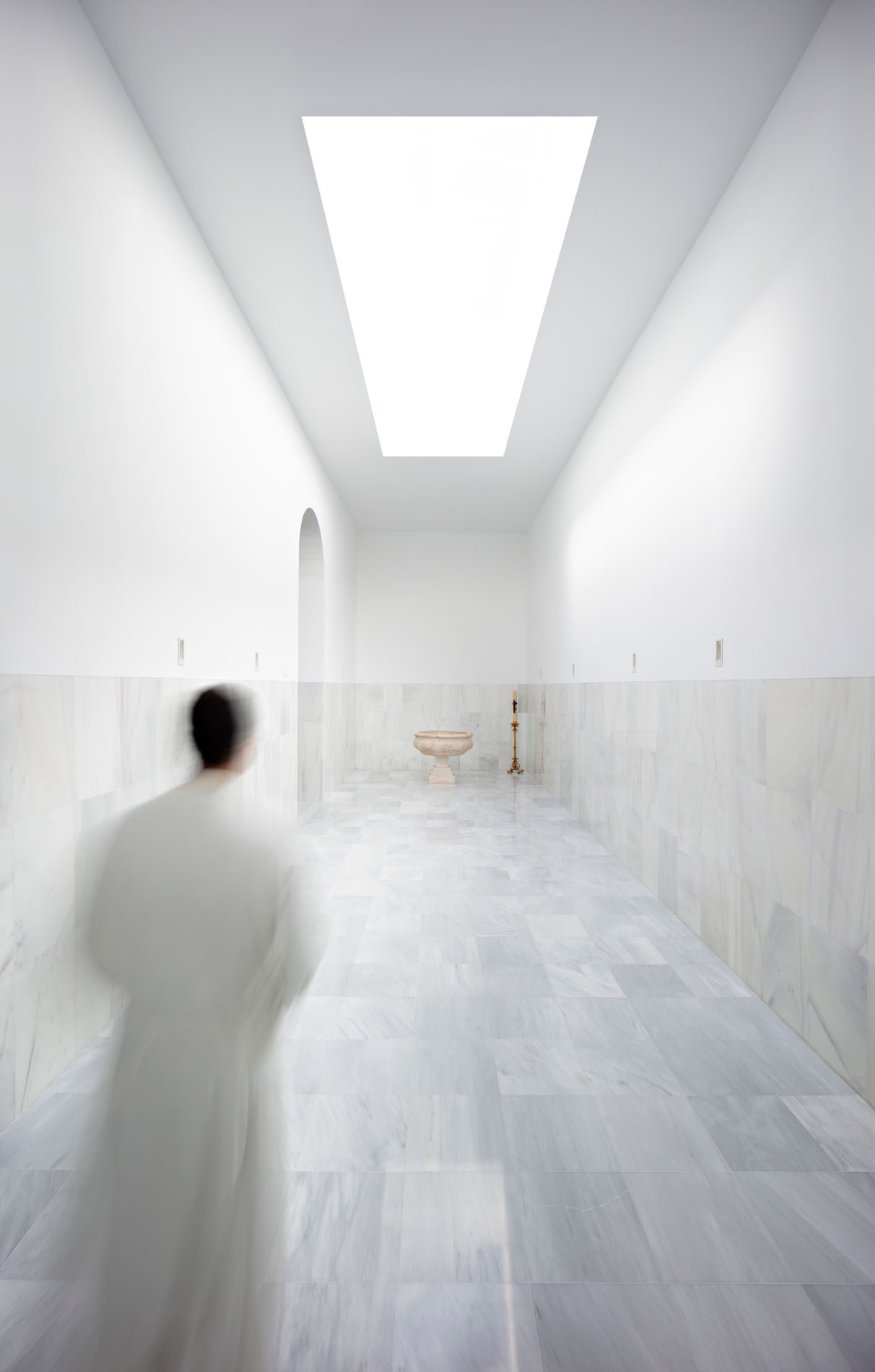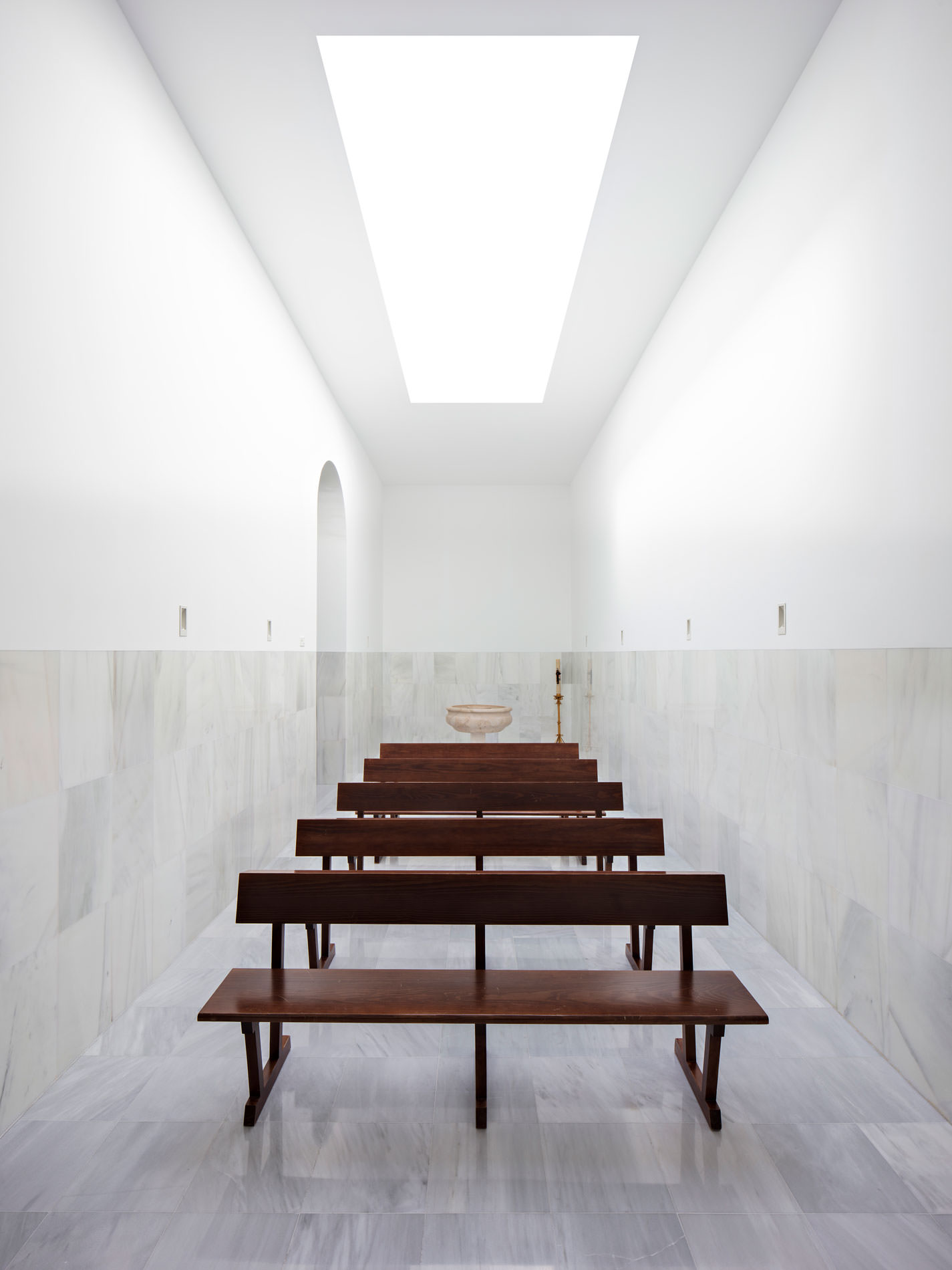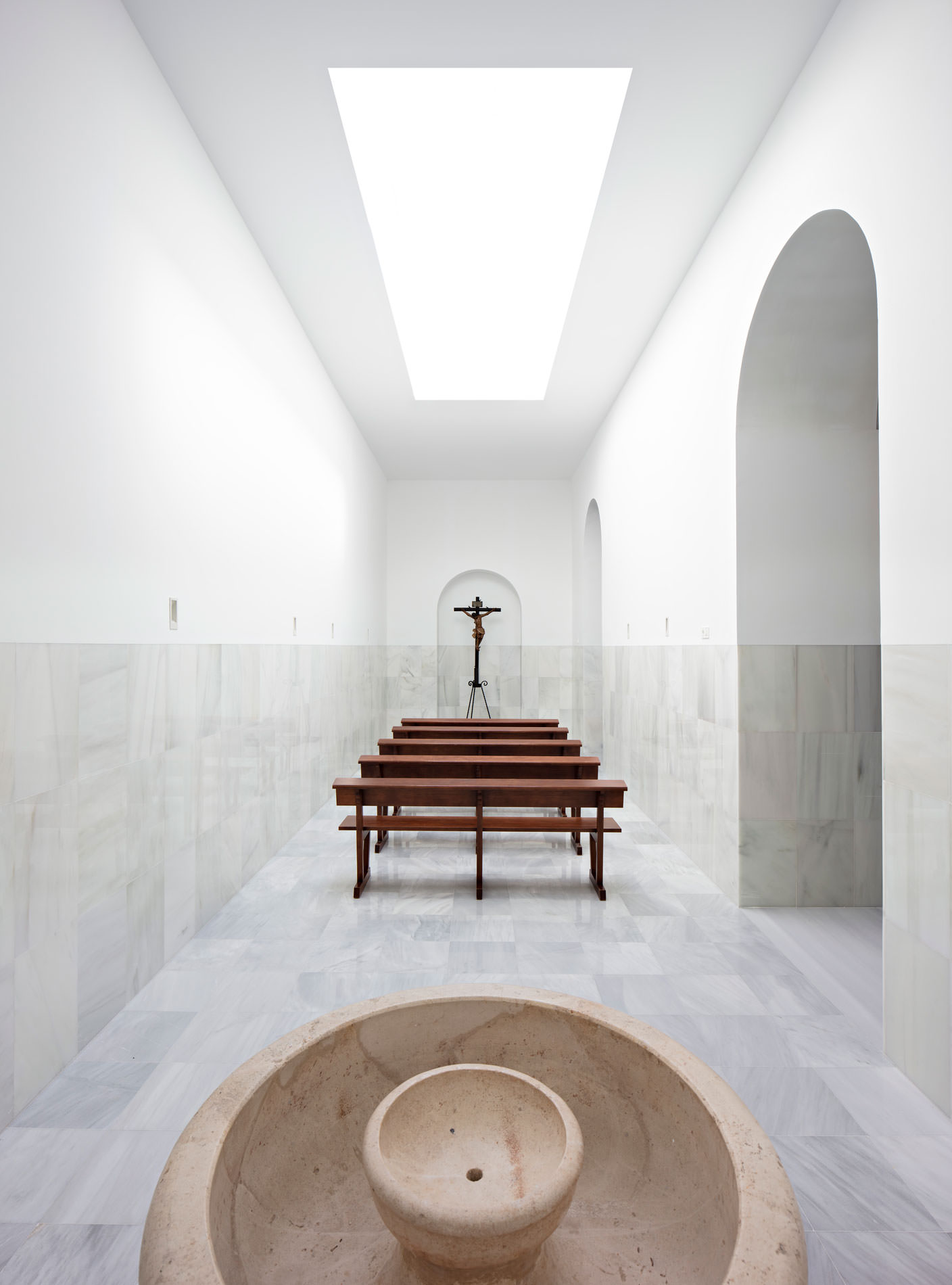Year of construction: 2017
Year of project: 2016
State: Built
Location: Parroquia Ntra. Sra. del Rosario. Martín de la Jara (Sevilla)
Promoter: Archidiócesis de Sevilla.
Architect: Pablo M. Millán Millán
Contributors: Javier Serrano Terrones (Technical Architect)
Builder: Juan Lola Construcciones
Photographer: Javier Callejas Sevilla
THE SUN THAT IS BORN FROM HIGH WILL VISIT US
In quibus visitavit us, oriens ex alto
To think of a space destined to house the Holy Sacrament is to think of a very specific area within a temple, the Sancta Santorum, a place for the encounter with God. If we analyze how these spaces have materialized throughout the history of architecture, we observe a radical importance of geometry and strong directionality. Under these premises, Diego de Siloé will draw a novel Renaissance plan for the Granada Cathedral with the sole objective of being an imposing monstrance or later Leonardo de Figueroa will do the same with the baroque chapel San Luis de los Franceses.
Every day, from east to west, with the dawn of a new morning, the Catholic Church repeats the canticle of “Benedictus” in its Lauds prayer. The movement of the earth always means that, every hour, in some corner of the world, the night is giving way to clarity and sprout this prayer. It is the same as the evangelist Lucas tells us (Lc. 1, 78), emerged as praise from the mouth of Zacharias, the father of John the Baptist, when he learned of the forthcoming birth of his son, a fact that would change his life, canceling the debt that had left him mute due to his lack of faith.
In this song, almost at the end, it is said “by the tender mercy of our God, the sun that is born from high will visit us”. The Light, according to the theological experience of Zacharias, comes from above and is the daily proof of God’s goodness towards his people. Evidencing this truth has undoubtedly been the intention when making a space in which only an opening above shows daily to the parishioners of the chapel that God is with his people.
The construction of this small chapel stems from the need of the adjacent church to introduce light. Thus, the project arises from a single reflection, to create “a box for the Light”, with the double meaning of being a box that contains light for the rest of the temple and of being a place that will contain the Light for all Christians: the Holy Sacrament. Searching for light, possibly the most important task of every architect, has become latent in this project by making a containing space that, due to its orientation and zenithal opening, is capable of introducing clarity throughout the church. The surface will be white and clean. Following this same criterion, the floor of the rest of the temple will be changed with the aim of greater light.
The search for an essential space, bare, without any element that could distort what is radically important in a sacramental chapel, has led us to opt for a Franciscan architecture, sober, clean of forms and ornate. The precision sought in a space with these characteristics will be determined by a strict, radical geometry, without any option that could be a source of dispersion. Thus, a concentrated space will be an illuminated and clean space, a space in which the Holy Sacrament is the center, and in an almost theophanic way, the light is proof of this.
LUMEN CHRISTI
The sacred space that the architect Pablo Millán has built for the Franciscans in Seville is a truly beautiful and sober space, sacred and Franciscan.
Sacred because when you are there, one cannot help but recognize the divine light that emanates from there, and be captivated.
When I was little, I was fascinated by the Easter liturgy in the wonderful cathedral of Cádiz, where my parents took us. And I remember with emotion when, all dark at first, the “Lumen Christi” sounded, repeated three times, in crescendo, sung by the deacon dressed in a white dalmatic. We all responded with “Deo gratias”, also in crescendo. And in the end, there was light, the light of the resurrection. And now, here, I recognize this divine light.
The architect has solved this space with very few elements. Floor and plinth in white Macael marble. Longitudinal skylight that is the source of light from above. And walls and ceilings painted white. Nothing more and nothing less.
And so, in this simple way, the light of the risen Lord, the “Lumen Christi”, has been made here. The light that our architect has managed to bring to this small space, with the simple simplicity of the spirit of San Francisco.
Alberto Campo Baeza

